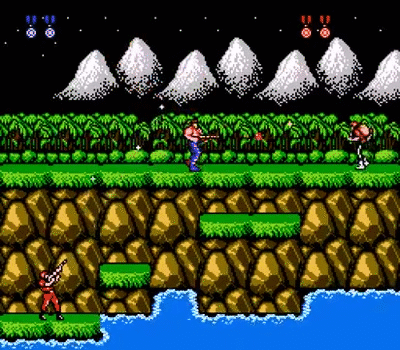Continued from part 4.
CYBER: Previously, I mentioned that Boellstorff sees "cyber" as a term that is roughly equivalent to "virtual" and "online" in many cases. He states that "cybersociality," "online culture," and "virtual world" are all interchangable (2010, pg. 17). "Cyber-" becomes just another prefix that means "related to a computer," as is common in today's vernacular, but I want to look at the roots of this term.
Boellstorff credits the coining of "cyber" to William Gibson's concept of cyberspace (first used in Gibson's "Burning Chrome" (1982) and expanded in his novel, Neuromancer (1984)) (2010, pg. 19). The "cyber" prefix has its roots in the term "cybernetics," first coined by mathematician Norbert Wiener in 1947, to give name to the science of "control and communication in the animal and the machine" (Wiener, Cybernetics (1948)) (2010, pg. 20).
From the start, cyber was concerned with control. This makes sense when looking at the root of cybernetics, the Ancient Greek kubernētikós (κυβερνητικός), essentially meaning "good at steering" (kubernáō "to steer," -tikós "skilled at").
In fact we "steer," or navigate, our way through virtual spaces constantly when dealing with digital media. Like modern-day flâneurs, we may "surf" the web through a network of hyperlinks, "scrub" the timeline to a specific point in a Youtube video, or mindlessly "scroll" through a news feed of social media updates. Similarly, one may embody an avatar in a digital game and navigate their way through a virtual world.
 |
| Lev Manovich, The Language of New Media (2002) |
I am interested in understanding how to discuss the aesthetics of navigation through virtual space. Lev Manovich posed this same question in The Language of New Media (2002), dating from way back when digital media was still "new" media. He also terms this concept "poetics of navigation through space" and how "art history, geography, anthropology, sociology, and other disciplines" give us tools to analyze static space, we don't really have a way to discuss dynamic space or its navigability (2002, pg. 259).
[Update 4 Dec 2022]
Note that this sensation of navigating virtual space is not exclusive to digital games. It is an aesthetic of all digital media, but I argue that it tends to be especially pronounced in games, where exploring new spaces may be the player's main goal. As an example, N. Katherine Hayles compares the kinesthetic experiences of reading books to those of reading hypertext, finding that greater engagement disconnects the reader from the printed page but further connects the hypertext reader to the computer interface.
This effect marks an important difference between screen and print. Although a reader can imaginatively project herself into a world represented within a print text, she is not likely to feel that she is becoming physically attached to the page itself. On the contrary, because the tactile and kinesthetic feedback loops are less frequent, less sensually complicated, and much less interactive, she normally feels that she is moving through the page into some other kind of space. The impression has a physiological basis. The physical stimuli the reader receives with print are simply not adequate to account for the cognitive richness of the represented world; the more the imagination soars, the more the page is left behind. This difference in the way proprioceptive coherence works with the computer screen, compared with the printed page, is an important reason why spatiality becomes such a highly charged dimensionality in electronic hypertexts (Hayles "The Condition of Virtuality" The Digital Dialectic 1999 pg. 88 emphasis original).
[End update 4 Dec 2022]
From this, I've been developing a new term:
CYBERKINAESTHESIA: The embodied sense of movement through a virtual space. Cyber- refers both to the original concept of "steering" and control along with "related to a computer." Kinaesthesia refers to one's sense of body position, orientation, and movement in space - and is synonymous with proprioception.
[It is commonly accepted that the two words are equal in meaning, and I will sometimes use them interchangably, but strictly speaking, proprioception is a sense of one's body's position in space and kinaesthesia is the sense of one's body's movement in space. Proprioception has a Latin base roughly meaning "self-receiving [sense]" (prōprius "one's own," re- "back," capiō "take") while kinaesthesia is from Greek and roughly means "movement sense" (kinein "to move," -aisthesis "perception," -ia "state of being").]
As I briefly mentioned in the last post, digital games can affect a player's preconscious sense of proprioception, causing players' bodies to duck when there is an on-screen threat, lean as they take a curve in a driving game, or move their head try to peer around a corner projected on the screen. The player's conscious mind has not been fooled into thinking that they have really entered the screen space (through the looking glass, if you will), yet their body may react as if they are "in" the game. Why?
 |
| Sylvie Bissonnette, Affect and Embodied Meaning in Animation (2019) |
Sylvie Bissonnette's Affect and Embodied Meaning in Animation (2019) examines this same "cyberkinaesthesia," as I call it, in digital games as well as similar embodied sensations from watching animated films. As she puts it, the viewer enters a "complex perceptual entanglement with the animation apparatus" [apparatus being the screen and the technologies that produce the moving images] (2019, pg. 3).
The technical interface becomes an extension of the viewer, something that we humans have a natural knack for, according to Andy Clark. In Clark's Natural-Born Cyborgs (2003), he writes that our neural physiology is pre-adapted to be transformed by our technological augmentations. We are "cyborgs not merely in the... superficial sense of combining flesh and wires but in the... sense of being human-technology symbionts: thinking and reasoning systems whose minds and selves are spread across biological brain and nonbiological circuitry" (Clark, 2003, pg. 3).
To be continued...









